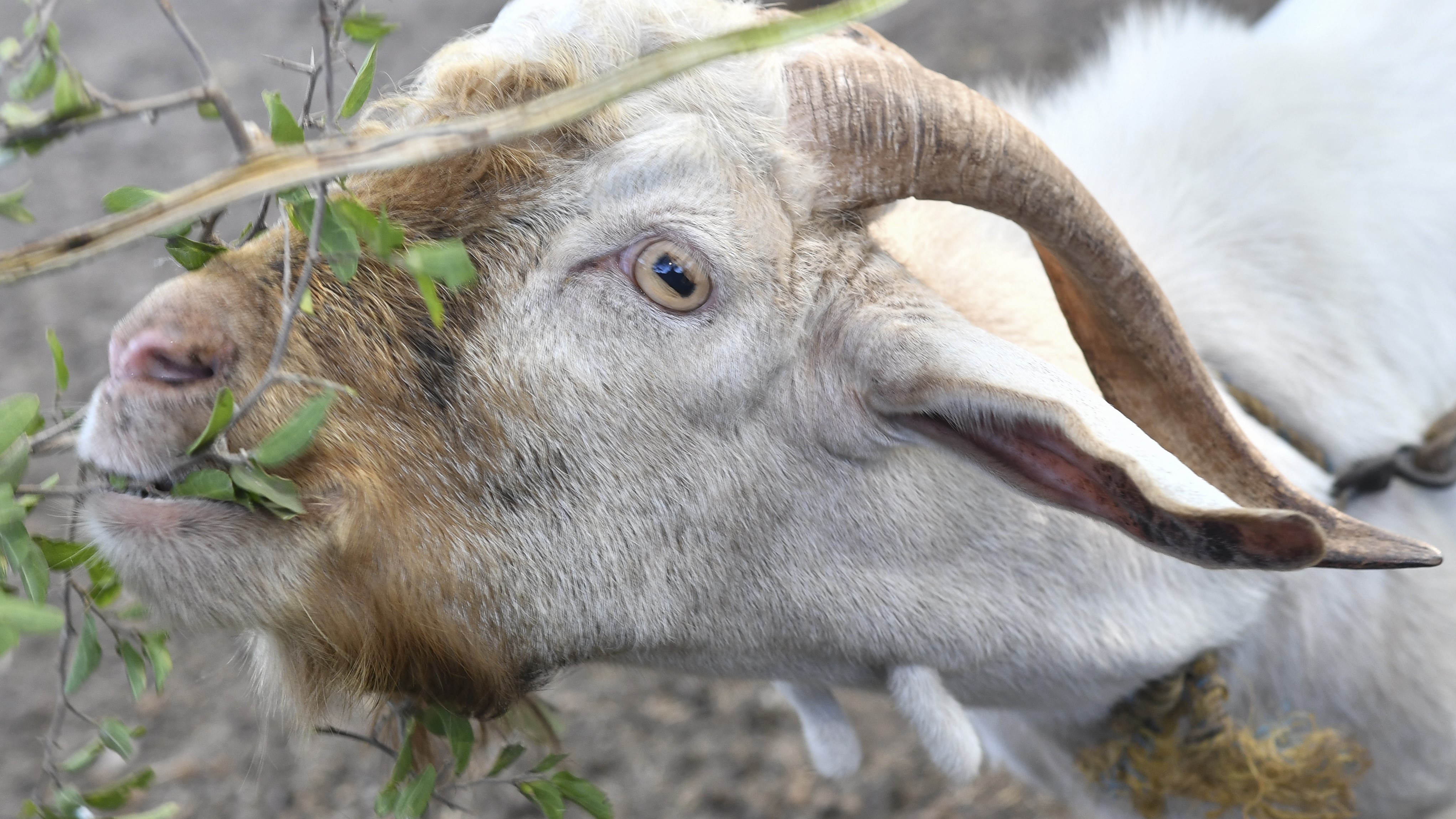El uso del género Celtis en la alimentación animal: una revisión
DOI:
https://doi.org/10.29059/cvpa.v3i1.39Palabras clave:
alimentación animal, CeltisResumen
El propósito en esta revisión bibliográfica es investigar el potencial forrajero del género Celtis en la alimentación de los animales, teniendo en cuenta su valor nutricional y el uso en sistemas de producción animal. Encontramos que existe información limitada del uso de esta planta en la alimentación animal. Celtis contiene altos niveles de proteína cruda (hasta 24.3 %), digestibilidad y perfiles minerales que cubren requerimientos esenciales en diversos animales domésticos. Es un recurso forrajero utilizado en distintas regiones, principalmente zonas áridas y semiáridas en continentes como América, África e India. El aprovechamiento alimenticio también ha sido empleado naturalmente por distintas especies de fauna silvestre. El género Celtis tiene un papel importante en la nutrición animal, sin embargo, hacen falta más estudios que amplíen y profundicen los conocimientos sobre esta especie en la alimentación animal.
Citas
Bashir, F., Nawab, M., Ganai, B.A., & Bashir, T. (2020). Patterns of resource use by Asiatic black bear Ursus thibetanus during pre-hibernation in Kashmir Himalaya, India. Journal of Natural History, 54(37–38), 2455–2469. https://doi.org/10.1080/00222933.2020.1850902 DOI: https://doi.org/10.1080/00222933.2020.1850902
Birnie-Gauvin K, Peiman KS, Raubenheimer D, Cooke SJ (2017) Nutritional physiology and ecology of wildlife in a changing world. Conservation Physiology, 5(1). https://doi.org/10.1093/conphys/cox030 DOI: https://doi.org/10.1093/conphys/cox030
Bosque, C., & Bucher, E. H. (2017). The diet of nestling and breeding White-tipped Plantcutters (Phytotoma rutila). Emu - Austral Ornithology, 117(2), 194–198. https://doi.org/10.1080/01584197.2017.1293475 DOI: https://doi.org/10.1080/01584197.2017.1293475
Campbell-Kissock, L., Blankenship, L.H., & Stewart, J. W. (1985). Plant and Animal Foods of Bobwhite and Scaled Quail in Southwest Texas. The Southwestern Naturalist, Vol. 30, N, 543–553. DOI: https://doi.org/10.2307/3671048
Chávez Espinoza, M., Bernal Barragán, H., Guerrero Cervantes, M., Cantú Silva, I., Cotera Correa, M., González Rodríguez, H., & Estrada Castillón, A. E. (2022). Seasonal nutritive value and in vitro fermentation kinetics of foliage of some multipurpose shrub species in northeastern Mexico. Tropical Grasslands-Forrajes Tropicales, 10(3), 184–194. https://doi.org/10.17138/tgft(10)184-194 DOI: https://doi.org/10.17138/tgft(10)184-194
Chiarello, A. G. (1994). Diet of the brown howler monkey Alouatta fusca in a semi-deciduous forest fragment of southeastern Brazil. Primates, 35(1), 25–34. https://doi.org/10.1007/BF02381483 DOI: https://doi.org/10.1007/BF02381483
Cuchillo, H. M., Puga, D. C., Wrage-Mönning, N., Espinosa, M. J. G., Montaño, B. S., Navarro-Ocaña, A. ... Pérez-Gil, R. F. (2013). Chemical composition, antioxidant activity and bioactive compounds of vegetation species ingested by goats on semiarid rangelands. Journal of Animal and Feed Sciences, 22(2), 106-115. https://doi.org/10.22358/jafs/66000/2013 DOI: https://doi.org/10.22358/jafs/66000/2013
Domínguez-Gómez, G., Ramírez-Lozano, G., González-Rodríguez, H., Cantú-Silva, I., Gómez-Meza, V., & Alvarado, S. (2014). Mineral content in four browse species from northeastern Mexico. Pakistan Journal of Botany, 46(4), 1421–1429.
Enomoto, T., Saito, M.U., Yoshikawa, M., & Kaneko, Y. (2018). Winter Diet of the Raccoon Dog ( Nyctereutes procyonoides ) in Urban Parks, Central Tokyo. Mammal Study, 43(4), ms2018-0024. https://doi.org/10.3106/ms2018-0024 DOI: https://doi.org/10.3106/ms2018-0024
Espinoza, C., Rodríguez, G., Silva, C., Correa, C., Castillón, E., Barragán, B., & Meza, G. (2020). Foliar mineral content of five shrub species with nutritional potential for small ruminants in semiarid regions in northeastern Mexico. Ciência Rural, 50(10), 1–11. https://doi.org/10.1590/0103-8478cr20200202 DOI: https://doi.org/10.1590/0103-8478cr20200202
Foroughbakhch, R. Hernandez-Pinero L & Carrillo-Parra A. (2012) Nutrient Profile, Floristic Compositions and Preference Index of Shrubs and Herbs Consumed by Goats in Semiarid Region of Northeastern Mexico. Journal of Animal and Veterinary Advances. 11 (9), 1299-1305. https://doi.org/10.36478/javaa.2012.1299.1305 DOI: https://doi.org/10.3923/javaa.2012.1299.1305
Ganai, A.M., Mattoo, F.A., Ahmad, H.A., & Bakshi, M.P. S. (2008). Evaluation of some top fodder foliages of Kashmir Valley. Applied Biological Research, 10(1y2), 11–16.
Ganai, I.A., Sharma, R.K., Pathak, A.K., Khan, N. and Rastogi, A. (2022). Chemical Composition, Phenolic Fractions, Protein Fractions and In Vitro True Dry Matter Digestibility of Fodder Top Foliages of District Poonch of Jammu and Kashmir. Journal of Animal Research, 12(03): 415-420. https://doi.org/10.30954/2277-940X.03.2022.15 DOI: https://doi.org/10.30954/2277-940X.03.2022.15
Guerrero-Cervantes, M., Ramírez, R.G., González-Rodríguez, H., Cerrillo-Soto, A., & Juárez-Réyes, A. (2012). Mineral content in range forages from north Mexico. Journal of Applied Animal Research, 40(2), 102–107. https://doi.org/10.1080/09712119.2011.607907 DOI: https://doi.org/10.1080/09712119.2011.607907
Habib, G., Khan, A., Sultan, A., & Ali, M. (2016). Nutritive value of common tree leaves for livestock in the semi-arid and arid rangelands of Northern Pakistan. Livestock Science, 184, 64–70. https://doi.org/10.1016/j.livsci.2015.12.009 DOI: https://doi.org/10.1016/j.livsci.2015.12.009
Ibrahim, H., & Abbator, F. (2015). Intake and nutrient digestibility in sheep fed some semi-arid browse plants. Nigerian Journal of Animal Production, 633–636. https://doi.org/10.51791/njap.vi.7785 DOI: https://doi.org/10.51791/njap.vi.7785
Kara, K.; Aktuğ, E. & Özkaya, S. (2016) Digestibilidad ruminal, recuento microbiano, ácidos grasos volátiles y cinética de gases de fuentes alternativas de forraje para zonas áridas y semiáridas como in vitro. Italian Journal Anim. Science 15, 673–680. https://doi.org/10.1080/1828051X.2016.1249420 DOI: https://doi.org/10.1080/1828051X.2016.1249420
Katoch, N., Tripathi, A., & Sood, S. (2018). Possibilities of non-conventional feed resources in livestock feeding—A review. Forage Research, 44, 141–151.
Keser, S., Keser, F., Kaygili, O., Tekin, S., Turkoglu, I., Demir, E., Turkoglu, S., Karatepe, M., Sandal, S., & Kirbag, S. (2017). Phytochemical Compounds and Biological Activities of Celtis tournefortii Fruits. Analytical Chemistry Letters, 7(3), 344–355. https://doi.org/10.1080/22297928.2017.1329664 DOI: https://doi.org/10.1080/22297928.2017.1329664
Kurdi, S.J.A. (2023). Polyphenol and Fatty Acid Content of Celtis tournefortii Lam and Prosopis farcta in Maznie Sub-district, Kurdistan region of Iraq. Current Research in Nutrition and Food Science Journal, 11(1), 360–375. https://doi.org/10.12944/CRNFSJ.11.1.27 DOI: https://doi.org/10.12944/CRNFSJ.11.1.27
Letter, A.W., Waldon, K. J., Pollock, D.A., & Mali, I. (2019). Dietary Habits of Rio Grande Cooters (Pseudemys gorzugi) from Two Sites within the Black River, Eddy County, New Mexico, USA. Journal of Herpetology, 53(3), 204. https://doi.org/10.1670/18-057 DOI: https://doi.org/10.1670/18-057
NCR. (2007). Nutrient Requirements of Small Ruminants. National Academies Press. https://doi.org/10.17226/11654 DOI: https://doi.org/10.17226/11654
Njidda, A. A., Al-Habib, I. K., & Oloche, J. (2021). Anti-Nutritive Factors, Mineral Profile, In Vitro Gas Production and Fermentation Characteristics of Ten Browse Forage Leaves. Nigeria Agricultural Journal, 52(2), 390–399
Nota, G., Svensk, M., Frund, D., Lombardi, G., Barberis, D., Pagani, R., Pittarello, M., Probo, M., Ravetto Enri, S., & Lonati, M. (2024). Foraging behavior of Highland cattle in silvopastoral systems in the Alps. Agroforestry Systems, 98, 491-505. https://doi.org/10.1007/s10457-023-00926-z DOI: https://doi.org/10.1007/s10457-023-00926-z
Phiri, F., & Kanengoni, A.T. (2025). Seasonal effects of Searsia lancea, Celtis africana and concentrate supplementation on weight changes, serum and urine metabolites in South African Nguni goats. Tropical Animal Health Production 57, 279 https://doi.org/10.1007/s11250-025-04523-3 DOI: https://doi.org/10.1007/s11250-025-04523-3
Phiri, F., Kanengoni, A. T., Hattas, D., & Mbatha, K. R. (2023). Seasonal effects of Rhus lancea and Celtis africana on intake, preference, and physiological responses in South African indigenous goats. South African Journal of Animal Science, 52(6), 900–913. https://doi.org/10.4314/sajas.v52i6.15 DOI: https://doi.org/10.4314/sajas.v52i6.15
Ramírez-Lozano R. 2003. Nutrición del Venado Cola Blanca. Universidad Autónoma de Nuevo León, pp. 40-62
Ramírez, R. (1998). Nutrient digestion and nitrogen utilization by goats fed native shrubs Celtis pallida, Leucophullum texanum and Porlieria angustifolia. Small Ruminant Research, 28(1), 47–51. https://doi.org/10.1016/S0921-4488(97)00067-9 DOI: https://doi.org/10.1016/S0921-4488(97)00067-9
Ramírez-Lozano, R., Ledezma-Torres, A., & González-Rodríguez, H. (2016). Influence of the shrubs Celtis pallida and Ziziphus obtusifolia on intake, digestion and N balance by sheep. Veterinarija Ir Zootechnika, 74(96), 18–22.
Ramírez, R., Rodríguez, A., Flores, A., Carlos, J., & García, J. (1990). Botanical composition of diets selected by range goats in Northeastern Mexico. Small Ruminant Research, 3(2), 97–107. https://doi.org/10.1016/0921-4488(90)90085-K DOI: https://doi.org/10.1016/0921-4488(90)90085-K
Ramírez, R. G., Sauceda, J. G., Narro, J. A., & Aranda, J. (1993). Preference Indices for Forage Species Grazed by Spanish Goats on a Semiarid Shrubland in México. Journal of Applied Animal Research, 3(1), 55–66. https://doi.org/10.1080/09712119.1993.9705953 DOI: https://doi.org/10.1080/09712119.1993.9705953
Safari, F., Hassanpour, H., & Alijanpour, A. (2023). Evaluation of hackberry (Celtis australis L.) fruits as sources of bioactive compounds. Scientific Reports, 13(1), 12233. https://doi.org/10.1038/s41598-023-39421-x DOI: https://doi.org/10.1038/s41598-023-39421-x
Salazar-Ortiz, J., Gastelum-Mendoza, F. I., Serna-Lagunes, R., Cantú-Ayala, C. M., & González-Saldívar, F. (2019). Dieta de herbívoros: técnica, importancia e implicaciones en el manejo de fauna silvestre. Agro Productividad, 12(4). https://doi.org/10.32854/agrop.v0i0.391 DOI: https://doi.org/10.32854/agrop.v0i0.391
Sahoo, B., Garg, A. K., Mohanta, R. K., Bhar, R., Thirumurgan, P., Sharma, A. K., & Pandey, A. B. (2016). Nutritional value and tannin profile of forest foliages in temperate sub-Himalayas. Range Management and Agroforestry, 37(2), 228–232.
Schroeder, E. L., Boal, C. W., & Glasscock, S. N. (2013). Nestling Diets and Provisioning Rates of Sympatric Golden-fronted and Ladder-backed Woodpeckers. The Wilson Journal of Ornithology, 125(1), 188–192. https://doi.org/10.1676/12-041.1 DOI: https://doi.org/10.1676/12-041.1
Singh, B., Kumar, M., Cabral-Pinto, M. M. S., & Bhatt, B. P. (2022). Seasonal and Altitudinal Variation in Chemical Composition of Celtis australis L. Tree Foliage. Land, 11(12), 2271. https://doi.org/10.3390/land11122271 DOI: https://doi.org/10.3390/land11122271
Urdampilleta, M., Totino, M., González-Arzac, A., Abt Giubergia, M., Lorenz, G., & Matteucci, D. (2023). Landscape agroecology: woody vegetation heterogeneity and its association with natural and human factors at a multifunctional peasant socio-ecosystem from a semi-arid mountain range area (Dry Chaco, Argentina). Agroecology and Sustainable Food Systems, 47(10), 1541–1573. https://doi.org/10.1080/21683565.2023.2254719 DOI: https://doi.org/10.1080/21683565.2023.2254719
Vargas-Colin, A., Flores, J., Romo-Campos, R., Douterlungne, D., Yáñez-Espinosa, L., González, M., & Luzuriaga, L. (2022). Changes in rainfall amount and seasonality modulate taxonomic, functional, and phylogenetic diversity in a gypsophilous plant community in the Chihuahuan Desert. Plant Ecology & Diversity, 15(5–6), 265–280. https://doi.org/10.1080/17550874.2022.2130017 DOI: https://doi.org/10.1080/17550874.2022.2130017
Yoshikawa, T., Masaki, T., Isagi, Y., & Kikuzawa, K. (2012). Interspecific and annual variation in pre‐dispersal seed predation by a granivorous bird in two East Asian hackberries, Celtis biondii and Celtis sinensis. Plant Biology, 14(3), 506–514. https://doi.org/10.1111/j.1438-8677.2011.00528.x DOI: https://doi.org/10.1111/j.1438-8677.2011.00528.x

Descargas
Publicado
Cómo citar
Número
Sección
Licencia
Derechos de autor 2025 Ciencias Veterinarias y Producción Animal

Esta obra está bajo una licencia internacional Creative Commons Atribución-NoComercial-CompartirIgual 4.0.
Aceptado 2025-08-15
Publicado 2025-08-28






